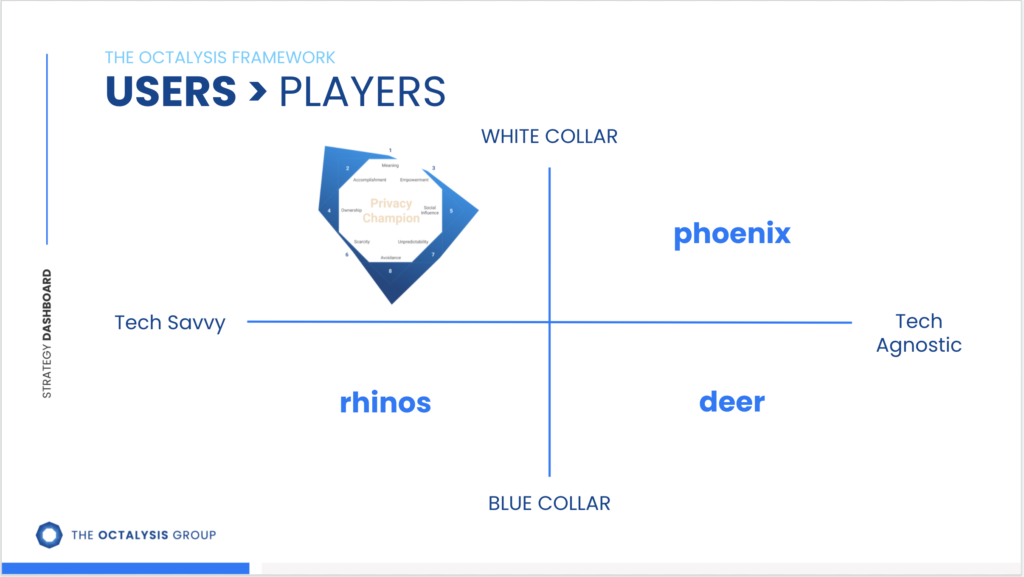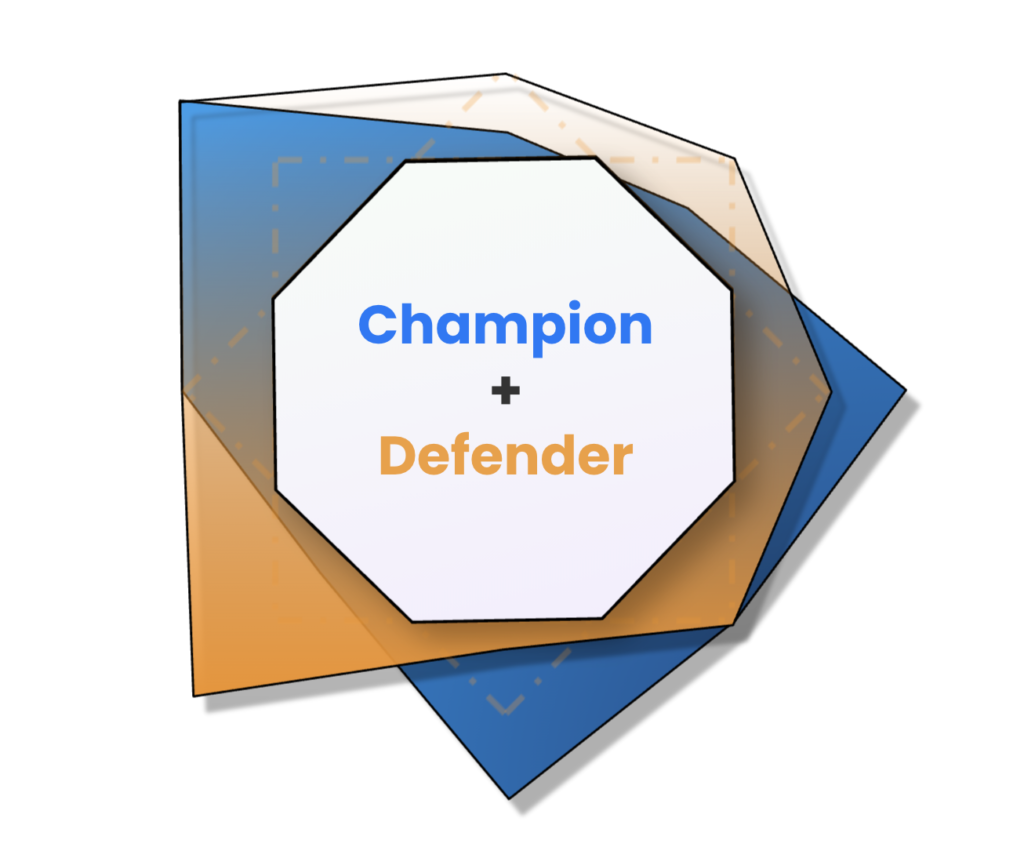Most people know how addictive online games like Candy Crush and Farmville can be. But do you understand why these games are so popular and addictive? What brings people back to these games again and again. More importantly, how can you use these knowledge in the design of an engaging User Experience for your products and services? Enter Octalysis.
Yu-kai Chou and The Octalysis Group have developed an intricately fine-tuned framework that helps unravel what aspects make these games so addictive. Moreover it explains how these aspects can be applied to virtually any business’ gamification efforts. The key involves visualizing your users as “players” that progress through each phase or “level” of the user experience. Let’s have a look at each of these player types in the context of the user journey.
Understanding the User Journey
From running a Digital Healthcare app to creating a Massive Open Online Course (MOOC), if your business requires motivated users to stay afloat, then you need to prioritize your user experience design. A prime part in this process is understanding the user journey – that is, how users navigate your product from beginning to end. That way, you can optimize each phase for user engagement and motivation.
The user journey can be broken down into four phases, each of which constitutes its own “product”. They are:
Discovery
In the Discovery phase, you are motivating users to try out your product. In other words, the journey begins before a user buys or subscribes to your product. Just because they have heard of it doesn’t mean they are motivated to see the journey through to completion. That’s where the Octalysis Core Drives of Human Motivation come in, including:
- Core Drive 1 – Epic Meaning & Calling. This Core Drive motivates users to buy into your product because it enables them to think that they’re being called for some higher-order purpose. For example, if your company mission is charity-based, then you could easily leverage this avenue. Toms shoes is a good example of a charity based company (the goal of the company is providing a new pair of free shoes to youth of Argentina and other developing nations for every pair of their shoes sold).
- Core Drive 2 – Development & Accomplishment. People value progressing and trying out new things. For example, you could motivate users to try a new product that makes them feel they are progressing faster than before. Most companies advertise that their product is “New!” for example.
- Core Drive 5 – Social Influence & Relatedness. Given our inherently social natures, this is not only one of the most inspiring but also effective core drives. Since it not only maximizes motivation, but engagement throughout. This core drive is relevant to all phases of the user journey.
- Core Drive 7 – Unpredictability & Curiosity. Here, users are motivated by the unknowns of what you have to offer. As it is Black Hat, it creates urgency to act. And because it has an intrinsic nature, people tend to want to do it because the activity itself is the reward.
Once you’ve got the user interested, the next phase is Onboarding, wherein the user learns the rules and tools of the system.
Onboarding
During the onboarding phase, many businesses make the mistake of assuming that once the user learns how to use the system, they’ll fall in love with it. So they write lengthy articles and create tutorials that outline all of the rules, options, and objectives. But this is bound to bore and minimize motivation!
The best way to onboard new users is to present the information in a “just-in-time” manner, so the user can feel smart and accomplished (Core Drive 2). What’s more, you’ll need to provide users with feedback along the way (Core Drive 2 and 3). Learners are naturally more motivated when they can verify their level of understanding/mastery.
A super simple way of introducing feedback (Core Drive 3) and instilling feelings of accomplishment (Core Drive 2) is with progress bars. Furthermore, to keep them progressing past the learning stage it helps to show users how far they’ve come along and how far they need to go.
Adding some unpredictability and curiosity (Core Drive 7) and promises of what could lie ahead in the user experience makes users want to come back to the experience and use your products or services more intensively.
By now, all your users should be ready to actually dive into your product, or “play the game”.
Scaffolding
In the Scaffolding stage of the user experience, users apply all the rules that they learned during “Onboarding”, and go about trying to achieve “win-states”, whether that’s collecting a certain number of coins/points/badges, slaying a dragon, or completing a lesson.
From a gamification standpoint, this user-journey phase could easily encompass many or even all of the 8 core drives. In that way, this stage could also be deemed the “habit-forming” stage. The habit-forming actually occurs in the background of the gamified experience, rather than explicitly. When it comes to habit-forming, gameful UX is indispensable, because habits consist of repetitive, routine actions. And whenever there’s repetition and routine, we want to empower people’s motivation and joy by targeted Gamification design.
For example, if you wanted to keep users continuously coming back for more, you could have a game where they build recipes and return to the game/app after some lengthy period of time – that is, when the recipes are done cooking or baking. If they don’t return on time, and the food is burned/goes bad, then they don’t progress to the next level or they lose points (Core Drive 8). This also leverages Core Drive 6 – Scarcity and Impatience. That said, if users get rewarded for coming back on time and serving the food, then they’ll not only feel accomplished (Core Drive 2), they’ll also feel a sense of pride and ownership (Core Drive 4) as well a sense of agency (Core Drive 3).
Moreover, depending on if your product or program works well with a heroic or epic storyline, you could simply motivate users by instilling a sense of being “chosen” or “called upon” for that which “only you” can complete (Core Drive 1). These days, businesses are realizing how core socializing is as an intrinsic motivator. As such, platforms include social gamification elements wherein users can interact via their avatars, discussion forums, or view each other’s progress on leaderboards (Core Drive 5).
We’ve barely touched on the tip of the iceberg, but as you can see, the Scaffolding phase of the user journey can easily incorporate all of the Core Drives. This is where the users uncover every aspect of the game and thereby gain mastery. At the point of mastery, they’ll need to repetitively come back for more. If your gamification tactics are on point here, you’ll experience unparalleled user engagement and retention rates.
Endgame
At this final stage of the user journey, the user has experienced all of the possible win-states as set by your gamified user experience. You could say that they have mastered the game. This stage is typically where businesses drop the ball. After all, how do you keep users motivated when they’ve seen and experienced everything you have to offer? Well, these users are your internal and external brand ambassadors. These Endgame veterans could also end up being your community managers, as well as your vehicles for your app to go viral.
The best way to go about this is by focusing on the White Hat (positively inspiring), intrinsic core drives to the right of the Octalysis octagon, such as Empowerment of Creativity & Feedback and Social Influence & Relatedness. Because these drives are intrinsic in nature, the reward is the activity itself. Give users the ability to deploy strategy and creativity while receiving constructive feedback. Let them engage deeply with other users while potentially making a name for themselves on the platform. This and many more strategies will continue to make the experience interesting, exciting, and meaningful, especially to these Endgame connoisseurs.
Because these users are so bought into your experience, you can deploy more black hat design here as well. Leverage the Sunk Cost principle perhaps, whereby the more a user invests into your product, the more they will fear the loss of their hard-earned status or achievements (Core Drive 8).
The point is, the Endgame of the user journey is not to be taken for granted. It’s one thing to hook users, but it’s another to keep them hooked forever, even after they have explored your platform/product for all its offerings.
Optimizing the User Experience for Different Player Types
There have been countless theories that aim to meaningfully categorize the various player types we see in games, and thus, gamification. This ranges from Bartle’s 4 Player Types, which fixates on behavior in multiplayer games, to a slight alteration by Marczewski, which focuses on extrinsic (reward-based) motivation vs core intrinsic motivation.
In general both Bartle, Marczewski and others state that there are some players that are mainly motivated by intrinsic “rewards”. These players are motivated by activities in the Gamified experience themselves, not the external rewards from such activities
Other sets of players identified are those that are motivated by external rewards/extrinsic motivation like points, badges, and leaderboards.
At Octalysis, we feel that trying to fit players in a range of moulds is overly simplistic. We have to realise that every experience is different and the roles that people play in these user experiences can be different too. An accountant could be rational and risk averse at work, but when he returns home can be a fearless leader of a clan in World of Warcraft. So what we do at Octalysis is to create player type analysis around opposing X- and Y-axes to get deep insight into the motivational makeup of our custom build player types.
See image below. We have already filled in one player type with a corresponding Octalysis core drive octagon. Can you think of other possible player types?
We can also overlay several player type octagons and show how these players are motivated differently. This then informs us how to adjust our designs to perfectly match the needs and desires of our users.
Crafting a high ROI Gamified experience is an art AND a science at the same time as you can see!
Design your own experience?
Do you want to create a truly engaging journey for your users? Then, knowing about the 4 phases of a user’s journey is a good start. Knowing how to change the design depending on what phase of the experience users are in is a logical next step. And reading about crafting a solid and fully customized player type profile is another step.
However, knowledge is only half of the battle. There are games that try to copy existing games in full, yet the original game is still way better than the new one. Why?
You can’t teach experience or copy a decade long track record of success. This is at the base of core insights into gameful UX design that only come with deep behavioral science practice and design for years.
That’s where The Octalysis Group comes in. We have worked with innovative and funded startups and major Fortune 500 companies to empower more than 1 billion user experiences.
Give us a shout to see how best to optimize the customer journey for enhanced user engagement and retention.






